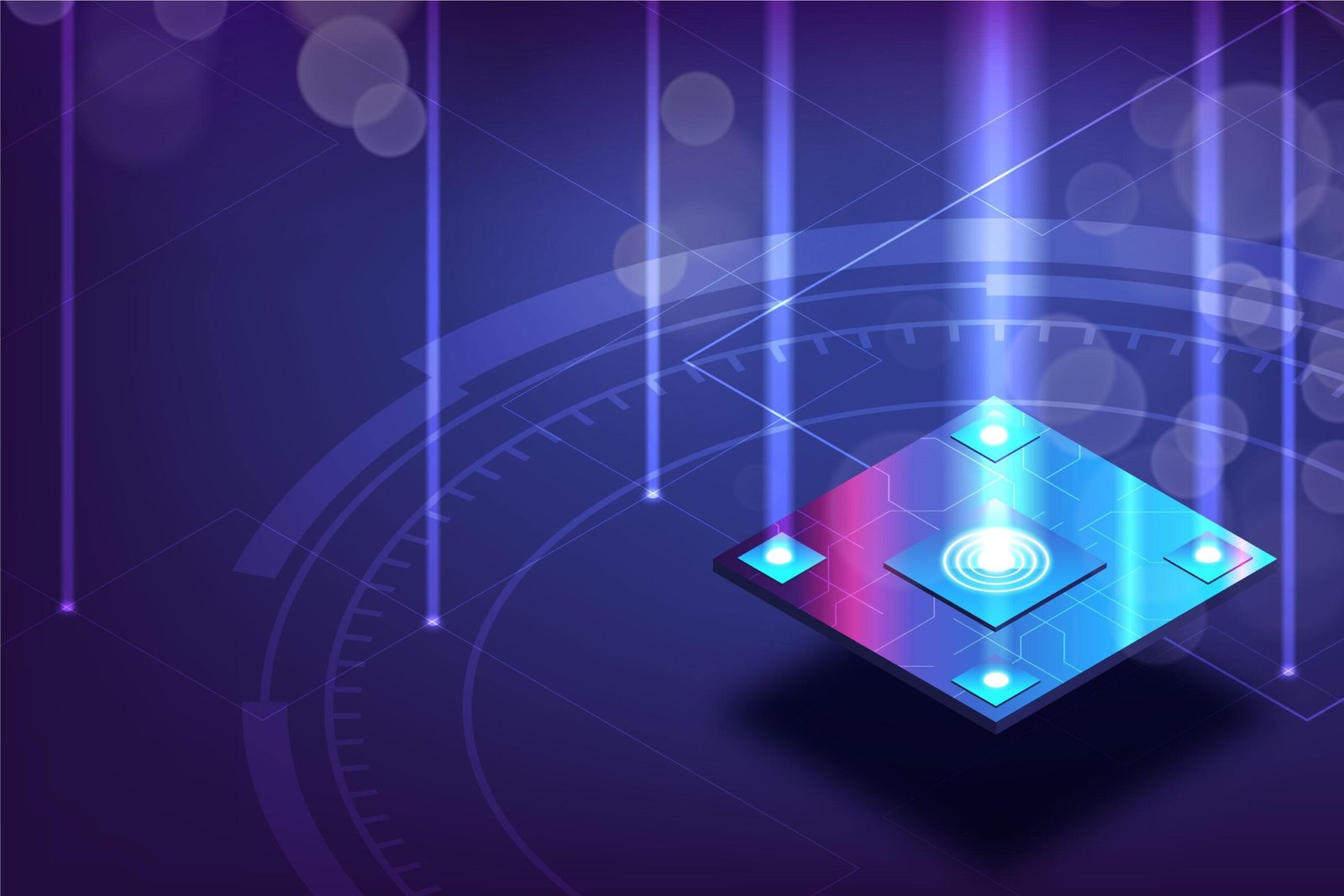
Securing Connectivity: Assessing LiFi Security & WiFi Vulnerabilities
Compare the security features and limitations of LiFi vs WiFi Networks. Gain insights into LiFi Technology’s role in modern cybersecurity.

The world of communication is currently dominated by wireless networking technologies, with WiFi being the most widely used one. At this point in history, most organizations and households rely on the traditional WiFi network to access the internet. WiFi technology has some obvious benefits such as connection flexibility and broader coverage that make it a favorite among users. But now we have the LiFi technology which is emerging as a WiFi contender in the communication market. With lower latency, higher bandwidth, and better connection stability, LiFi has many qualities that make it a viable WiFi alternative.
In this article, we compare the differences between WiFi and LiFi while focusing on network security as a key component of this assessment. We explore whether LiFi is more secure than WiFi and whether it can replace traditional wireless networks in the near future. Starting with developing an understanding of what LiFi is, we will go on to compare the WiFi security system with LiFi security to come up with definitive answers.
Understanding LiFi and WiFi
WiFi and LiFi are two popular wireless communication technologies that are used to transfer data across a network. WiFi is the most commonly employed system for providing local area networking and internet access to users. On the other hand, LiFi is a more recent technological innovation that can offer high-speed data transmission within a confined space.
WiFi or Wireless Fidelity uses radio frequency signals to transmit data over a local coverage zone. As a wireless communication technology, WiFi eliminates the need for building a physical connection between transmitters and receiving devices. This is because WiFi technology relies on transmitting data through modulation and demodulation of carrier radio waves. WiFi devices are regulated by a family of wireless network protocols based on the IEEE 802.11 standards, which makes them easy to integrate with most modern computing products. Presently, WiFi is the most widely used communication technology for establishing private as well as public internet networks across the globe.
LiFi or Light Fidelity is a wireless communication technology that relies on light frequency signals to transmit data. LiFi is being recognized as a viable WiFi alternative that offers a new mode of connectivity that is different from radio-frequency-based traditional networks. LiFi uses invisible or infrared lights emitted from LED bulbs to carry data from a transmitter to a receiver. LiFi networks are usually faster and more secure than traditional WiFi or 5G connections. They also offer a higher bandwidth and do not face any interception from radio waves in the environment. Due to the inherent nature of light signals, LiFi-based connections are confined within closed coverage zones as they cannot penetrate walls or other physical obstacles in their path.
LiFi Security
Network security plays an important role in determining the reliability of a given communication system. Internet security companies prefer data transmission networks that protect sensitive data by disallowing external access. The security of a wireless connection usually depends on deploying strong encryption protocols that prevent unauthorized users from intercepting network signals. WiFi network security is usually governed by advanced encryption standards called WPA2 and WPA3. Internet users can now create an added layer of privacy by accessing WiFi connections with virtual private networks or VPNs.
Compared to WiFi networks, LiFi security is considered to be more robust and dependable. This is because connection security is an inherent feature of light frequency signals. Here are some factors that make LiFi security better than WiFi network security:
A Physical Layer of Security
Radiofrequency waves used by WiFi can easily travel past walls and get intercepted by unauthorized users who may be far away from the access point. On the other hand, LiFi signals are always confined within a physical space that is predetermined by the positioning of their access points. Light communication signals that govern data transmission in LiFi networks cannot pass through solid objects like walls or curtains. Their confinement to a specific zone of coverage makes it impossible for hackers to intercept LiFi signals from outside a building. As a result, the nature of light waves protects LiFi networks from unauthorized interception or malicious attacks.

Line-of-sight Communication
LiFi security is enhanced because light signals are inherently more secure than other electromagnetic signals. As LiFi signals cannot pass through opaque obstacles in their environment, they need to stay in direct line-of-sight with the receiver to transmit data. This makes it difficult for unauthorized users to access LiFi networks without being present in their coverage zones. The need to maintain a direct line-of-sight transmission pathway between the LED light source and LiFi receiver gives them an additional layer of privacy in busy spaces.
Immunity to Electromagnetic Interference
LiFi-based networks can offer seamless connectivity in already densely populated environments with other electronic devices. Traditional networks operating on radio-frequency signals are prone to interference from other electromagnetic signals from nearby devices. This interference leads to reduced data transmission speed and connection stability of conventional internet systems. However, LiFi is completely immune to disruption from external devices as it operates using light waves, which are not susceptible to electromagnetic interference. This improves the overall security and reliability of LiFi devices by enhancing network stability.
LiFi Vulnerabilities
LiFi security, speed, and connection stability make it a rising star among internet communication technologies. However, certain vulnerabilities might compromise the performance of LiFi networks. These are:
Limited Coverage Area
LiFi networks are confined to a predetermined coverage zone due to the inherent character of light waves. Traditional WiFi networks can easily pass through walls and maintain connectivity with the help of radio signals. However, LiFi signals are unable to penetrate opaque objects in their pathway. This means that LiFi networks are limited within the room or area where the source of light is installed. As a consequence, it might require additional infrastructural planning and costs to provide seamless connectivity across larger spaces using LiFi technology.
High Cost of Installation
The cost of installing LiFi technology depends on factors such as the size of its coverage zone, the number of equipment needed, and the overall complexity of a building’s infrastructure. Although the LiFi installation process is quick and easy, it does require initial investments in purchasing, access points, and receiver devices. Further, it also takes labor and expert guidance to successfully deploy a functional LiFi network and integrate it with existing infrastructure. As a result, LiFi might be more costly to install when compared to traditional networks.
Limitations of Line-of-sight Connectivity
LiFi operates through light waves which require a direct line of connection between the transmitter and receiver. This makes LiFi signals vulnerable to interruption from physical obstacles like walls or furniture which can obstruct their path. This means that LiFi transmitters and access points must be strategically located to maintain line-of-sight communication with receivers. Despite this, LiFi signals might get disturbed by moving objects or humans in the environment, leading to disruptions in connection stability.
LiFi vs. WiFi: A Comparative Analysis
Here are some key areas of comparison that show how LiFi serves as a welcome alternative to WiFi networks:
Speed
LiFi offers a faster data transmission rate and lower latency when compared to traditional WiFi. This is because WiFi depends on radio waves which operate within an average frequency range of 4GHz. On the other hand, LiFi connections rely on fast traveling light waves which offer more than a thousand times higher frequency range. As a result, LiFi can transmit large volumes of data at a super-fast speed.
Reliability
WiFi connections are susceptible to interference from electromagnetic signals in their environment. As a result, users may experience signal degradation while using a WiFi network around other electronic devices. In comparison, light signals are immune to electromagnetic interference from nearby devices. This makes LiFi more reliable in terms of connection stability and security, especially in denser or busy work settings. However, LiFi’s requirement to stay in direct line-of-sight contact with connected devices can sometimes hinder its effectiveness in dynamic environments.
Health Impact
Studies show that prolonged exposure to radio waves can harm the mental and physical health of vulnerable populations. WiFi-based internet is the most commonly employed communication system in public spaces such as hospitals, libraries, educational institutions, and offices. This means that a major chunk of the present human population is constantly being exposed to radio waves in the environment. LiFi eliminates this health hazard by doing away with dependence on radio signals and using light waves for data transmission. Light signals are proven to have no negative photobiological effects, making them completely safe from a public health perspective.
Environmental Impact
LiFi technology is more sustainable and eco-friendly in comparison to traditional communication technologies. Most WiFi networks require the deployment of cables, routers, and heavy connectivity apparatus to be functional. On the other hand, the LiFi deployment process is lighter and quicker as it only needs some simple equipment with virtually no need for cable installation. As a result, LiFi reduces the electronic waste that is typically generated by reliance on traditional communication networks. Besides this, LiFi technology also consumes a lower amount of power and results in a reduction of electricity consumption in the long run.
Best Practices for Securing Wireless Connection
Here are some popular methods that are used to protect the privacy of wireless networks:
- Enabling Two-Factor Authentication
Two-factor authentication (2FA) adds an extra layer of security to networks by requiring users to provide two forms of identification before being able to access an account. Typically, this involves protecting a user’s account with a password, and a computer-generated authentication code. This makes it harder for criminals to gain unauthorized access to the network.
- Using a Strong Password
A strong password for wireless networks must be at least eight characters long, and include a mix of upper- and lower-case letters, numbers, and symbols. Using passwords for safeguarding your wireless connection can protect your network from security breaches and hackers. Regularly updating your passwords is an important part of ensuring that your network remains secure in the long run.
- Data Encryption
Using modern data encryption protocols such as the WPA3 can protect wireless networks from unauthorized access and eavesdropping. These protocols scramble the data being transmitted through a network so that it can only be decrypted by authorized users. Encryption can protect data integrity and confidentiality by safeguarding the information carried over a communication channel with strong encryption keys.
- Using a Firewall
A firewall can enhance network privacy by monitoring and controlling incoming traffic based on predefined security rules. It works as a safety barrier between an organization’s internal and external networks by filtering unauthorized access or security breaches. There are two main types of firewalls: network-based and host-based. Network-based firewalls are usually employed in business or office environments where there is a large number of users on a single network. Host-based firewalls are installed directly on individual devices and are more commonly used by private users.
Experience the Best LiFi Network Security with Oledcomm
LiFi technology is the perfect solution for modern-day communication systems that consider network security as one of their top priorities. Network security is a crucial part of the overall LiFi experience, and Oledcomm pays keen attention to safeguarding the data integrity of its users. Our devices come with built-in LiFi security solutions such as data encryption, secure key distribution, and log management protocols to create an attack-proof communication system.
Whether you are an individual or an organization looking to enhance the privacy of their data transmission systems, Oledcomm LiFi has a product for your specific needs. To make LiFi technology a part of our everyday lives, Oledcomm builds customized LiFi products for projects and institutions across the globe.
So, if you want to experience the joy of seamless and secure LiFi connectivity, contact Oledcomm now!
WiFi technology can be secure if proper security measures are implemented. It typically relies on encryption protocols such as WPA2 or WPA3 to protect data transmission. Additionally, using strong passwords, enabling two-factor authentication, and employing firewalls can further enhance WiFi security. However WiFi can be intercepted from far away.
LiFi is considered to be more secure than WiFi due to its inherent characteristics. LiFi signals are confined within a physical space, making it impossible for unauthorized users to intercept them from outside a building. Additionally, LiFi operates using light waves, which are immune to electromagnetic interference, further enhancing its security.
WiFi uses radio frequency signals to transmit data over a local coverage zone, while LiFi relies on light frequency signals emitted from LED bulbs. WiFi can penetrate walls and other physical obstacles, allowing for broader coverage, whereas LiFi signals are confined within closed coverage zones and cannot pass through opaque objects.
LiFi is safer than WiFi due to several factors:
- LiFi signals are confined within a physical space, making interception by unauthorized users from outside the coverage area difficult.
- Light signals used in LiFi are immune to electromagnetic interference, enhancing network stability and security.
- LiFi requires line-of-sight communication, making it more difficult for unauthorized users to access the network without being physically present in the coverage area.
While it’s unlikely that LiFi will completely replace WiFi in the near future, there is a strong potential for LiFi to complement existing wireless technologies and find niche applications where its unique advantages, such as higher security and speed, are highly valued.
Recent articles

Categories
See some more...




